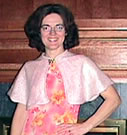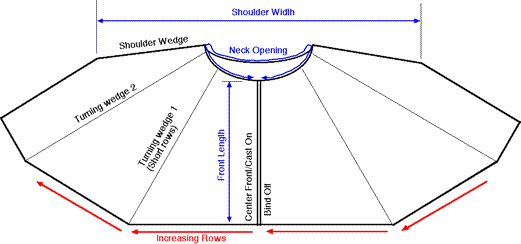Capelet
You can make your capelet shorter or longer than mine, use yarn like mine, or use heavier yarn. You can make your capelet flare more than mine. The generator will spit out the pattern you want.
Main site, blog, Poncho & Cape collection, Poncho I, Poncho II, and Poncho III.
You must set your browser to run javascript and to accept cookies to run this program.
Characteristics of the capelet:
- Knit from center front to center front using short rows.
- Optional 1.5" attached roll collar.
- Pinned closed with a decorative pin or Idiot Cord ties.
- Idiot Cord trim at the center front opening.
- You can pick the shoulder width, neck opening size and length to fit you.
- You can enter your stitch and row gauge to get the pattern for your yarn.
- MK
- This pattern can be handknit, but you need to count rows and
stitches while knitting short rows. If you want a long cape, buy
a row counter and read the notes for hand knitters. You will also want to read how to knit on I -Cord,
and adapt that part of the pattern. (Enter hand knit I-Cord in
the google search box.)
Remember: Like all patterns spit out by my generators, this is
mostly shaping directions.
The purpose of the generators is to let you be
creative, while eliminating the need to do pesky
calculations. This generator will let you make exactly the cape shown, but I encourage you to add your own touches.


